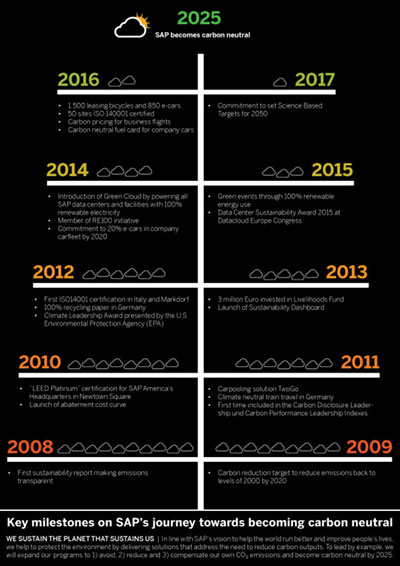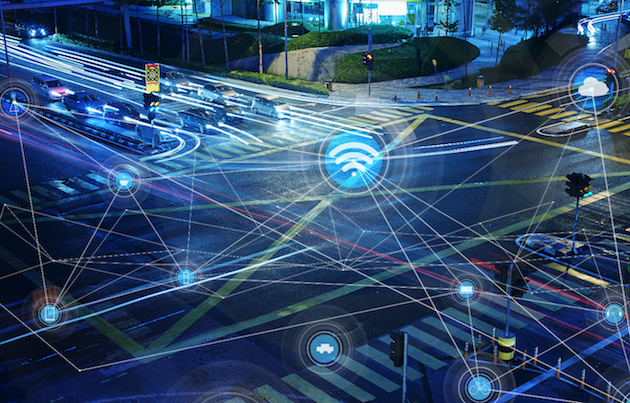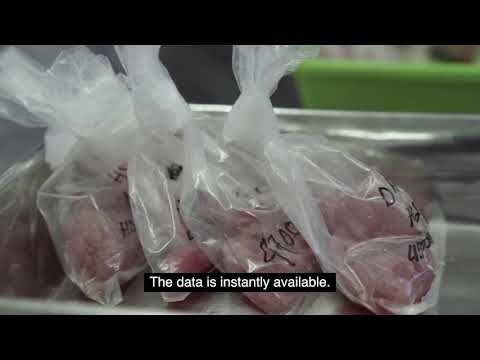
It’s Year-End: What’s Your 2019 Talent Strategy?
December 11, 2018
AI in SAP S/4HANA Cloud: Intelligent ERP Connects Demand to Supply
December 11, 2018After holding steady for three years, global CO2 emissions increased in 2017, and show no signs of peaking. Most G20 countries are falling short on reaching their national commitments to combat climate change. Unless countries significantly step up their actions toward decarbonization, it is now unlikely that global warming can be kept below 2°C.
These are among the alarming findings of the 2018 Emissions Gap Report that the UN Environment agency presented on the eve of the 24th Conference of the Parties to the United Nations Framework Convention on Climate Change (COP24), taking place from December 2 to 14. The annual report provides an update of global emissions and assesses the gap between anticipated emission levels in 2030, as well as the reductions required to keep the temperature increase to below 1.5°C/2°C. Just how critical it is to reach this goal was detailed in the recent Special Report on Global Warming of 1.5°C of the UN Intergovernmental Panel on Climate Change (IPCC) describing the effects on sea level rise, heat waves, biodiversity loss, and more.
The picture painted is grim and the call for action is as urgent as ever. But, as the report points out, there still is some reason for hope: “We have a lot to do, but the good news is that we’re already learning what works.” Increased participation from the private sector, low-carbon innovation like in e-mobility or renewable energy technology, and green financing are seen as pathways to bridge the emissions gap.
Enabling Climate Action Through SAP Solutions
“Climate Action” is one of the UN Sustainable Development Goals (SDGs), also called UN Global Goals, to which SAP is committed and also in line with the company’s vision and purpose.
“SAP’s key lever to contribute is our product portfolio, with which we enable customers to create positive economic, environmental, and social impact,” says SAP Chief Sustainability Officer Daniel Schmid. “If we look at our broad reach, with more than 413,000 customers, the potential for us to make a difference could be enormous.”
Research such as #SMARTer2030, conducted by Global e-Sustainability Initiative (GeSI) and Accenture Strategy, suggests that the digitization of business processes and the application of data to decisions about resource usage could reduce carbon emissions significantly. Based on the study results and SAP’s own calculations, SAP concluded that its solution and technology portfolio for six major industries has the potential to help abate up to 7.6 gigatons of carbon emissions. That is 63 percent of the total of 12.1 gigatons abatement potential projected by the study by 2030.
Some of this potential has already been realized by customers like Vestas and Kaiserwetter in the utilities sector. However, a lot more could be done.
“First, we need to engage with customers more around how we can help them improve their footprint by applying a purpose-driven approach,” says Will Ritzrau, director of Sustainability at SAP. “Second, we have to work on mastering the challenge of measuring the impact we create through our solutions. And third, we need to extend our reach by embedding environmental impact features across the entire portfolio — beyond selected dedicated sustainability solutions.”
One focus area to address the latter is “zero waste,” with waste being defined in its broadest sense, beyond the classical meaning of end-of-pipe rubbish and more in the sense of lean management. For example, emissions, single-use plastics, obsolescent inventory, unnecessary energy consumption, asset downtime, less than full truckloads, working overtime: All are waste. In this context, even working on unhealthy, dangerous or boring tasks is waste. “Zero waste” therefore is the future core theme of the digital supply chain.
According to the UN Emissions Gap Report, 6,000 companies with at least US$36 trillion in revenue, have pledged climate mitigation action, including SAP. But many more of the over 500,000 publicly traded companies worldwide have yet to act. To help inspire more businesses to address climate change and achieve the societal benefits of sustainable development, the German Federal Ministry for Economic Cooperation and Development (BMZ) recently introduced the new Alliance for Development and Climate. SAP is one of the 70 initial partners.
Leading by Example: SAP’s Internal Efforts

While the focus is on innovations that help customers become more sustainable, SAP is also committed to being a role model in reducing its own greenhouse gas emissions, and has implemented a number of measures in order to achieve this (see infographic). SAP wants to generate 85 percent less CO2 along the entire value chain by 2050 as part of the Science-Based Target Initiative. To become carbon neutral in its own operations by 2025, SAP is working on the three pillars of avoiding, reducing, and compensating remaining emissions.
In recent years, SAP has steadily reduced its own CO2 emissions back to the levels of 2000, reaching this at the end end of last year despite growing fourfold in number of employees. In 2017, SAP reduced its CO2 emissions by 55,000 tons compared with the previous year. The exact figures can be found in the annual SAP Integrated Report.
All SAP data centers and office facilities have been running on green energy since 2013 and more than 50 SAP locations have rolled out environmental management systems that meet the ISO14001 standard. In addition, SAP headquarters in Walldorf and St. Leon-Rot are currently piloting the implementation of an energy management system based on the ISO50001 norm.
Mobility plays a key role, so the commuting behavior of employees is also included in the calculation of SAP’s CO2 emissions. Results of the 2018 employee commuting survey show a positive trend: In 2018, daily carbon emissions from commuting went down by 4.7 percent compared to last year, illustrating that colleagues are making choices that combat climate change. Car use declined by five percent, public transportation held steady, bicycle usage increased by 15 percent, and working from a home office grew by 11 percent compared to last year.

When emissions cannot be avoided or reduced, SAP compensates by investing in CO2 offsets. In return, SAP receives CO2 credits from the sponsored projects. The focus is on high-quality projects such as the Livelihoods Fund, which combines reforestation with the improvement of the livelihood of rural communities and fulfills the GOLD standard of the World Wide Fund For Nature (WWF).
On Earth Day 2018, SAP CEO Bill McDermott announced SAP’s pledge to plant 5 million trees until 2025 as part of its carbon neutral commitment and compensation efforts. To date, 1,570,000 trees have been planted, including 500,000 in the Project Kikonda Forest Reserve in Uganda in this year. The number does not include the trees planted through SAP’s investment in the Livelihoods Fund in 2018, because those numbers will only be provided at the end of the year.




